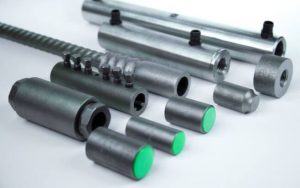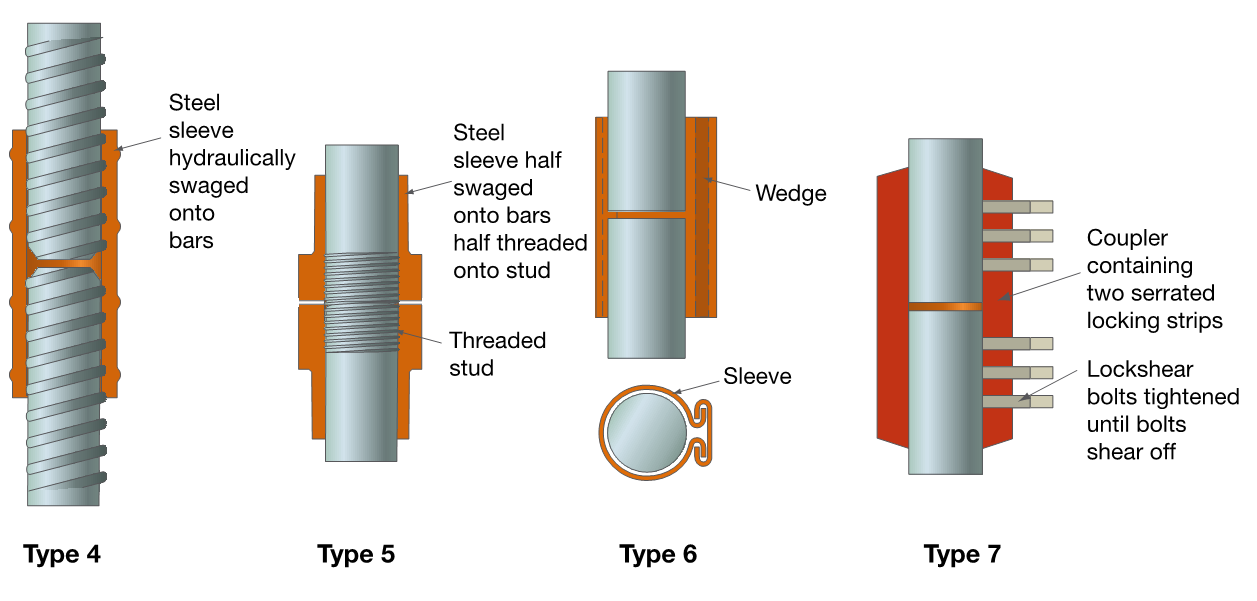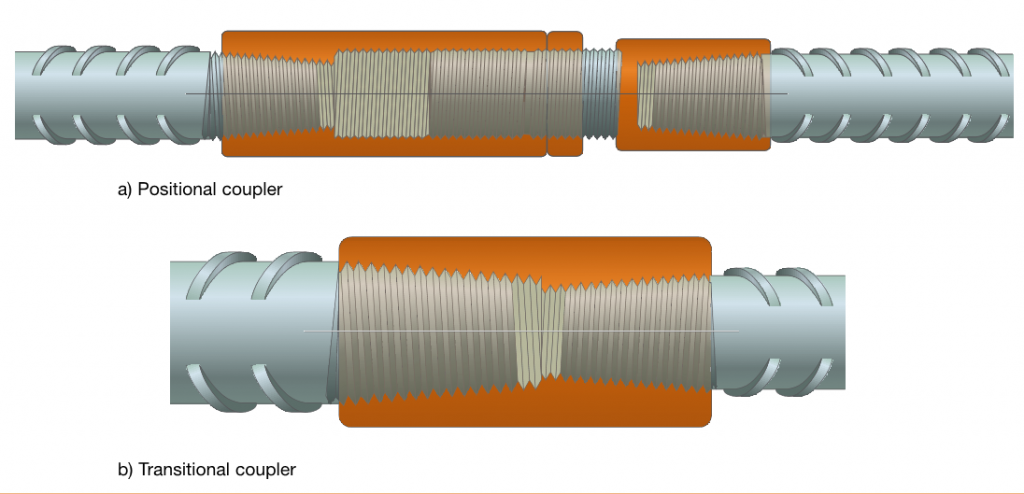The general practice, in case, the length of the stocked rebars is not enough for the full length of the elements, lapping is required to join the bar lengths’ together. Provision of required lap length to the bars is necessary which is ensuring the maximum transmission of the load stresses from one bar to another.

THE PROBLEM WITH LAPPING BARS:
In the highly loaded structures, and/ or the section size to be kept being smaller for architectural purposes, the reinforcement will be congested in that section. So, lapping the bar at this state, will generate more unwanted stresses to the element at the lapping locations.
So mechanical couplers are used to join the rebars eliminating the extra bar size added to the section and also which is reducing the effectiveness of the section.
BENEFITS OF USING COUPLERS OVER LAPPING THE BARS
Continuity of the rebars are preserved by using the couplers effectively, thus permitting the continuity in load path in the element. Thus, the mechanical couplers improve the structural integrity. In the lapping bars, the concrete is taking part in load transferring slightly which might be questioned in the coastal areas where the concrete gets delaminated due to rebar corrosion. So, use of couplers ensure the load transfer even at the coastal areas. The usage of the couplers eliminates the reinforcement congestion and thus reduces the material cost by eliminating the lengths of laps.
TYPES OF COUPLERS AVAILABLE IN THE MARKET
There are two main types of couplers, namely tension couplers and compression couplers. Usually tension couplers to be used to join the rebars if not specified the type by the designers.
Also, the couplers can be distinguished in several types for tension and compression reinforcements as follows,


TYPE 1 – Couplers with parallel threads – For Type 1a, the threaded portion of the rebar is having smaller diameter than the other part. So, the load carrying capacity is reduced here. Thus, it is rarely used. For Type 1b, the threaded portion is having higher diameter than the rest to maintain the load capacity as the rest portion of the bar. Transitional couplers can be used to join the two different sizes of the bars and the positional couplers is used to join the two haves of the bars.

TYPE 2 – Couplers with taper-cut threads
TYPE 3 – Couplers with integral threads over full length bar – This is used with the high yielding rebars which is having helical deformations along its length. The locknuts at the both ends prevents the bars from slippage on the coarse threads.
TYPE 4 – Metal sleeves swaged onto bars – Hydraulic press is used to swage the sleeves onto the ends of bars. So sufficient working space is necessary.
TYPE 5 – Threaded couplers swaged onto the ends of reinforcing bars
TYPE 6 – Wedge locking sleeves – To connect the compression bars, Type 6 couplers can be used.
TYPE 7 – Couplers with shear bolts and serrated saddles






No comments:
Post a Comment
Please feel free to comment regards this post